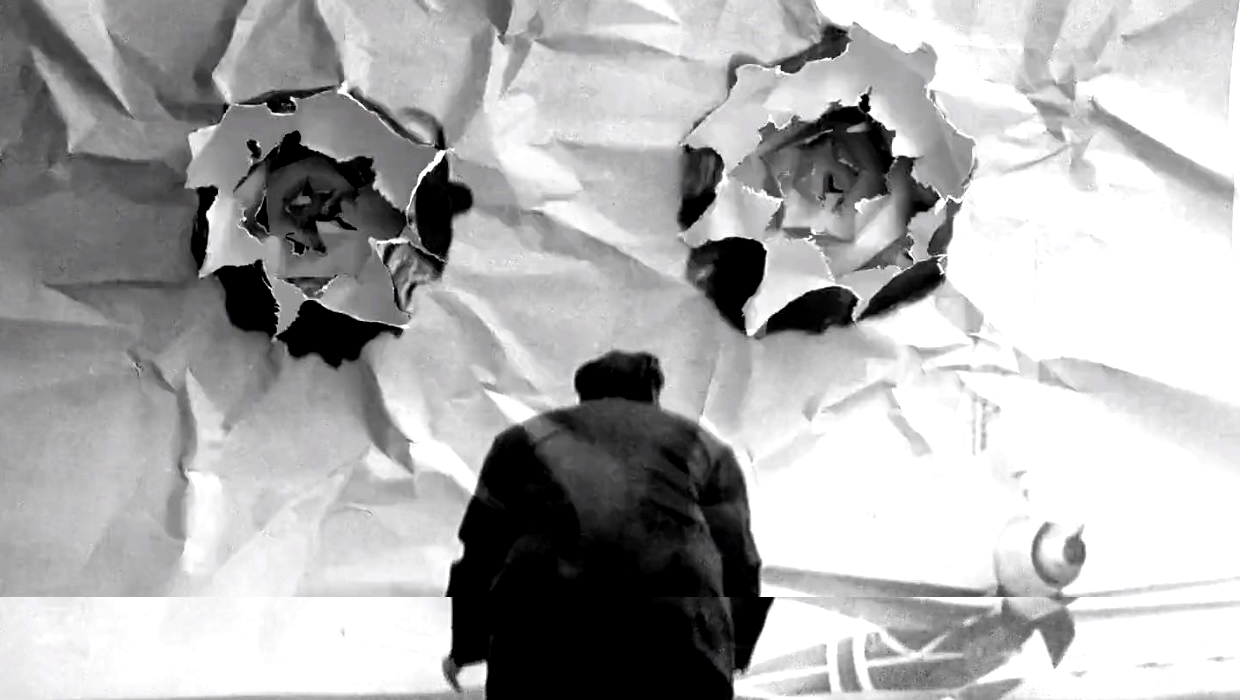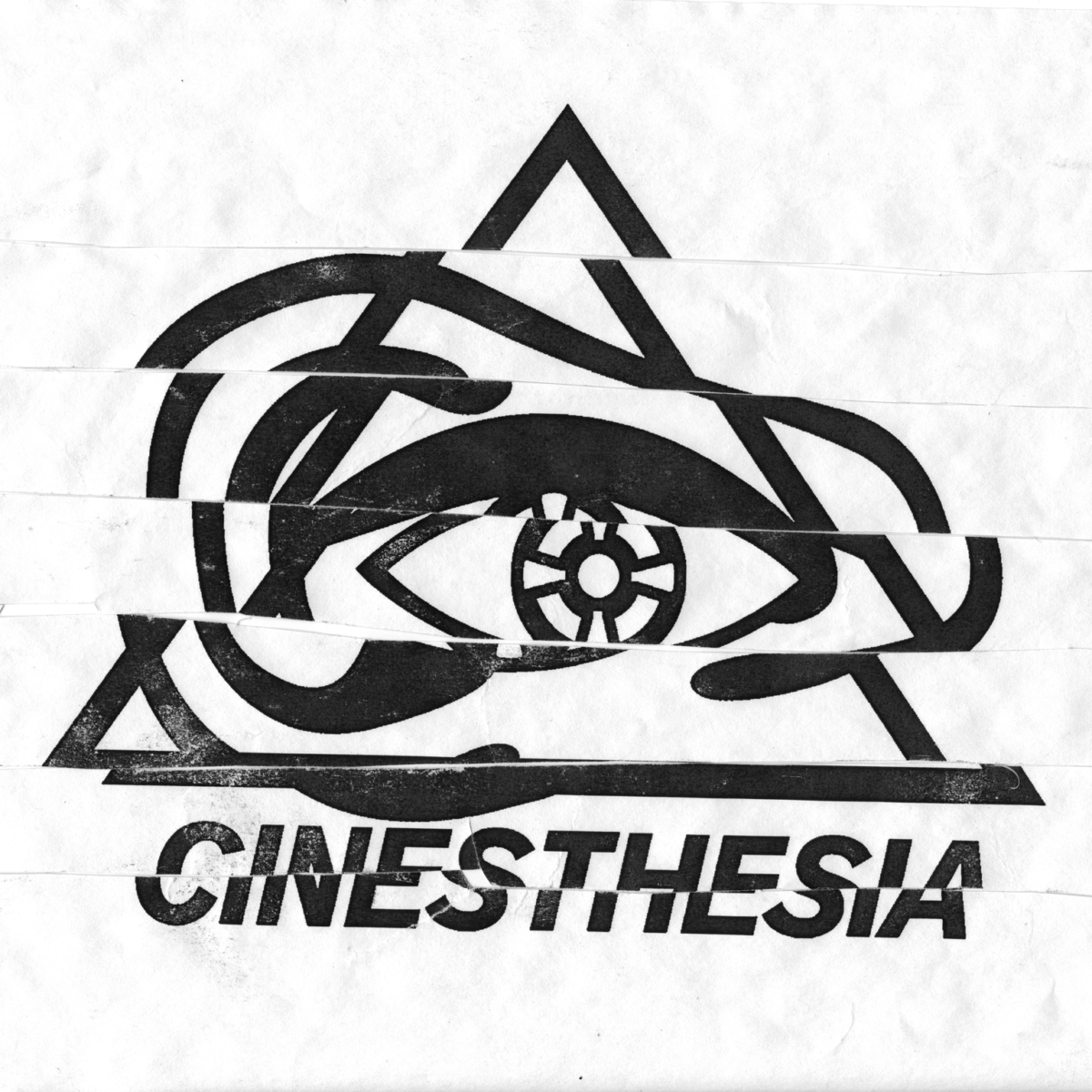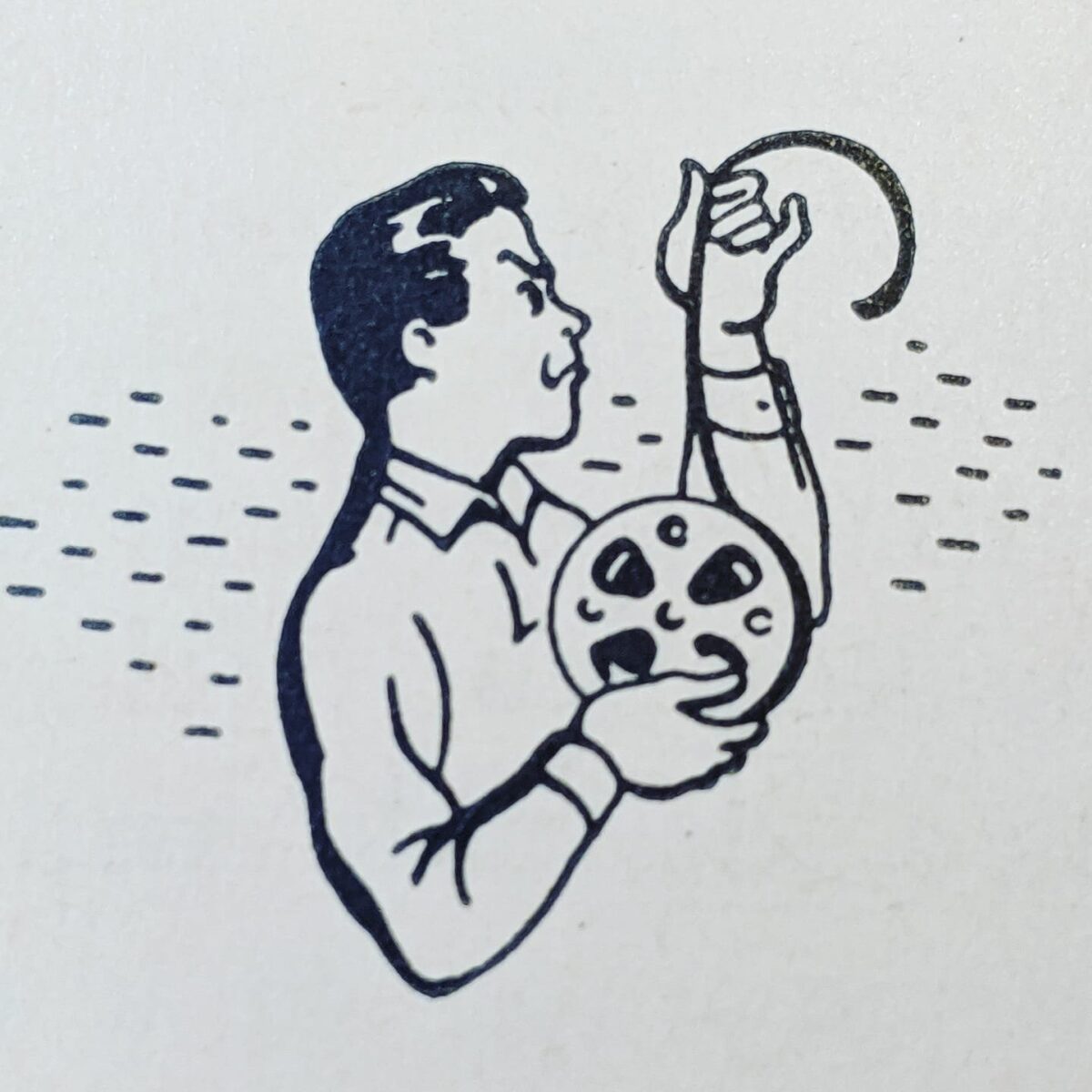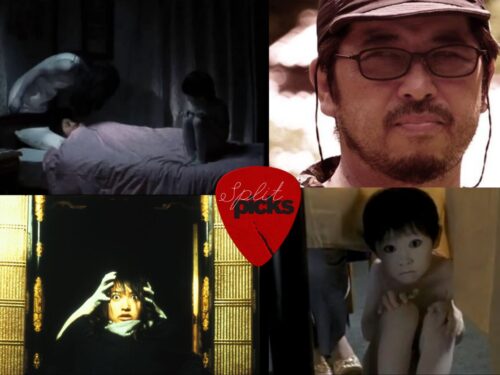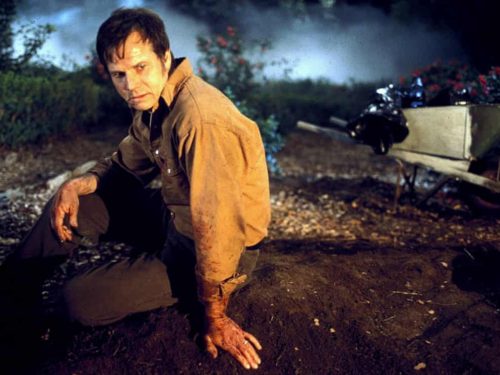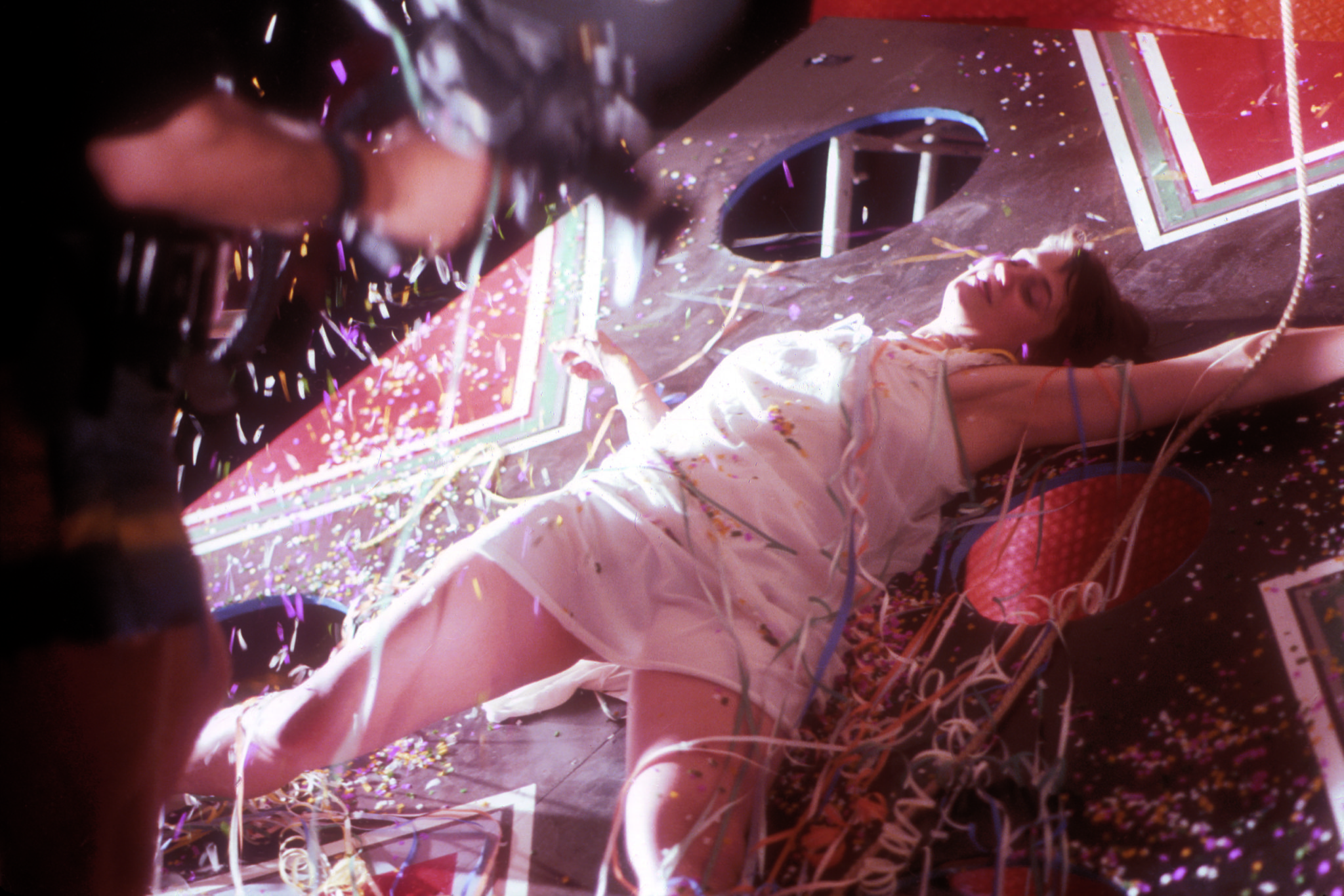Presented on crumpled and torn paper, The Timekeepers of Eternity is a re-adaptation of Stephen King’s The Langoliers that resembles a story being devoured as it passes
“Deep in the trenches carved into the floors of the Pacific and the Indian Oceans, there are fish which live and die without ever seeing or sensing the sun. These fabulous creatures cruise the depths like ghostly balloons, lit from within by their own radiance. Although they look delicate, they are actually marvels of biological design, built to withstand pressures that would squash a man as flat as a windowpane in the blink of an eye. Their great strength, however, is also their great weakness. Prisoners of their own alien bodies, they are locked forever in their dark depths. If they are captured and drawn toward the surface, toward the sun, they simply explode. It is not external pressure that destroys them, but its absence.”
The uneasy transition from page to screen is a case of conflicting forms: the length, ambiguity, limited third-person, and habits of digression found in the average mass-market paperback are seldom suited to the handicapping realism and the bias for visual description often found in cinema. The film is a square hole to the book’s round peg: to contain the whole of a novel, or, at least, to remain faithful to it, may be the goal of such films, but it is a path of subservience. The impossibility of conveying on film the nature of literature is baked into their very forms, one which is illustrated in the mind and relies on the dynamics of language; the other is illustrated by the camera through acting, blocking, lighting, mise-en-scene. No such translation can ever serve the needs of each medium, for their relation to time, and to the representation of image, are irreconcilable. In literature, the image summoned by language tends toward ambiguity. One bridge between these forms is storytelling — the notion that a novel could provide the bones of a scenario that could become a dramatic film. By this translation, the role of imagination shifts: scenes conjured by the act of reading are made more definite in the constructed, staged drama of the movie.
There was no greater mass-culture storyteller in the last quarter of the twentieth century than Stephen King. Throughout the 1990s his novels and novellas became fodder for another distinctively mass-culture form: the TV movie. King’s novella The Langoliers traps a cast of characters in a fantastical situation: they awaken on a long-haul flight to discover that all of their fellow passengers have vanished. It is a story about people who aspire to be something other than what they are, some more than others: there’s the novelist who wants to be Sherlock Holmes and his Watson; a violin prodigy who wants to be a cowboy. Others have more implicit aspirations for change: the hit man who sacrifices himself in search of redemption; the weary pilot whose backstory declares the compromises he’s made in his personal life for the sake of his job; and Craig Toomy, a bank manager experiencing a mental and professional breakdown, caught in transit on his way to a meeting where he intends to brag about his intentional failures to cast off a lifetime of pressure. Toomy is one of King’s great creations. He lends an air of meta-textual menace to the novel with his obsessive-compulsive tearing of paper, and one is tempted to imagine a ceaseless tearing-away of the book itself, page-by-page. For Toomy, this is an habituated attempt to busy his mind, even if automatically, in order to stave off “the langoliers,” boogeymen of his childhood, imposed on him by the threats of his father. They are creatures that eat the lazy and the unproductive. The passengers eventually realize that they’ve become unstuck in time and are threatened by a swarm of creatures that devour the past. The Langoliers was adapted for network television in 1995, with Bronson Pinchot as Craig Toomy, a tortured, histrionic performance from an actor often typecast for his beaming cheerfulness.
Explore King’s The Langoliers novella and the TV adaptation:
The Greek filmmaker Aristotelis Maragkos undertook a re-adaptation of King’s novel, an adaptation twice removed: The Timekeepers of Eternity (2021) is a remix of the 1995 TV movie that condenses its three hours to one tight hour. It maintains the translation’s chronology while focusing, for the bulk of it, on the behaviors of Craig Toomy. Maragkos takes his title from a description of the omnivorous creatures, spoken by the Holmesian mystery novelist Bob Jenkins, a term that better describes them than Toomy’s boogeyman nonce phrase. What sets Maragkos’ adaptation apart is his approach to the remix: he prints each frame of The Langoliers to A4 paper, which allows him to tear and crumple the paper, mirroring Toomy’s obsessive behavior. The limited tonal range of the paper print-outs, combined with Maragkos’ interventions — intermittently distressing, tearing, and crumpling the images — give the film a sense of character interiority that is absent from the source film. Maragkos further distances his work from its source by means of fragmentation: he is working at a rate of 12 frames per second, leading to a hazy, distorted sync-relation with the source sound. This gives the film an oneiric quality, like scenes half-glimpsed in the slumber of an airplane’s darkened cabin, crossing after midnight.
The crumpled-canvas aesthetic of Maragkos’s paper materiality recalls Virgil Widrich’s Copy Shop, in which the protagonist photocopies his hand and thus creates an army of clones, the entire film made from laser-printed images that resemble the eroding generation loss of the photocopy. Like Copy Shop, The Timekeepers of Eternity finds a thematic purpose in its paper aesthetic: Maragkos has claimed that his work is about “the villain’s struggle to escape his obsession with torn paper.” While this provides a “faithful” link between the story of the novella, its adaptation, and its re-adaptation, the frayed paper also offers a deeper and less conscious connection between the disparate experiences of literature and cinema. On a superficial level, the torn paper becomes a split screen; at times the tears seem to float around characters to isolate them from others. These interventions are in service of the story’s interpersonal violence, but they also seem to be enacted by an alien subjectivity, a story devoured as it passes. Maragkos’ agitation of the paper is often focused on action within the frame and accentuates simple gestures. When there is stillness, a value that both the scenario and the TV movie rely on, there are often fractures and agitation. Maragkos’s concept is in the “skin” of his film, this substitute-emulsion, and that conceptualism is skin-deep; like the superficial observation that this is about Toomy’s struggle with paper, it is a plastic effect with narrow application. Often, the film maintains the drama of the TV movie. It does not wholly transform the TV movie aesthetic — inevitably cold and formulaic — into something personal and handmade, because it remains obedient to the impersonal structures of the TV movie. Maragkos’ manipulations serve a purpose beyond split screens and images-within-images and imposed dynamism: he uses them to eliminate the pauses created through coverage. He also relies on coverage, as when figures are erased and reconstituted through his paper operations: they are etched in and out, prisoners of paper. To become unstuck in time is a literal thing in Maragkos’ film, with figure and scenery shifting restlessly against one another, cutting in and out like a flickering lightbulb.

The Timekeepers of Eternity is a variation on the contract of exchange and influence and departure that functions between literary property and film adaptation. Property is the keyword here, for in its reformulations of image affected by the lenticular forms of ink-on-paper, that look that is so readily equated to the generation loss of the “photocopy,” The Timekeepers of Eternity summons many parallels from the history of propriety and copyright in cinema, for example, the fact that early films were duplicated to paper as a mechanism for copyright. In this, the motion-picture image as a paper-printed image has a deep precedent. Not only does a re-adaptation become a copy of a copy. The act of copying introduces these histories of copyright into the conversation, as well as those of the perpetual facsimile, duplication, appropriation, and the bootleg.
Are you a Stephen King fan with 21 hours to kill?
Listen to Cinethesia’s Hell to the King podcast series:
Maragkos’ reliance on the drama of the TV movie and his faithful replication of its scenario holds a contradictory nature to his technique: if the torn-paper aesthetic situates the narrative in the perspective of Toomy, as the filmmaker has claimed, then the many expository digressions involving other characters, including scenes he is not witness to, refuse to allow the film to become an interior study. This eating-away of the scene becomes less about Toomy’s subjectivity as an unreliable narrator, and more a literal treatment of the swarm, the passing-away-into-nothing of temporal events. Maragkos violates this suggestion when he allows his animation stand to zoom out, revealing the hands of the animator. It is a self-conscious gesture, one which again punches holes in the experience: it insists on material self-consciousness, even as the scenario offers a more fantastical thematic connection between the tearing-away of the image and the story itself. The Timekeepers of Eternity is, inevitably, a film about labor: the boogeymen of The Langoliers eat the lazy. Against this, the restlessness of Maragkos’ technique is a marker of the filmmaker’s hard work. However, this explicit acknowledgement of that labor violates the suspension of disbelief that bonds technique and story; it echoes again in the closing credits when the hands of the filmmaker flash with each changing title card.
Maragkos is working between traditions: his operations are always focused on narrative drama, but they also suggest something like the approach to found footage film practiced by the Austrian avant-garde, in particular the work of Martin Arnold and Peter Tscherkassky. The way in which Maragkos works with genre storytelling invites parallels to Tscherkassky’s Outer Space (1999). Tscherkassky takes scenes from Sidney Furie’s The Entity (1982), a film in which a woman is repeatedly raped by a poltergeist. Tscherkassky’s operations involve dispersed lighting, loose, vibratory registration of the frame, and superimpositions, characteristics that make the protagonist’s encounters with the ghost even more menacing and unpredictable. Tscherkassky amplifies the violence in an already violent movie, largely through his use of selective, masking light, which pulses through the image, revealing it in part, but also, plunging much of it into an agitated, vibrating darkness. The eye searches for danger. Outer Space is all the more terrifying for its material self-consciousness, which turns the woman from a character being tortured into an actress, Barbara Hershey, performing terror, suspension of disbelief peeled away, fear reduced to artifice. The poltergeist seems to have seized the film itself, as it flickers between positive and negative, sprockets and waveform intruding and concealing the subject, an act that suggests even greater violence. Outer Space recalls, in its implied violence, David Lynch’s experience in dealing with the censorship of his film Blue Velvet (1986): the MPAA requested that a slap be cut out, and as a result, there seemed to be an implication of far more brutal violence. To suggest and conceal violence intensifies its impact; this is one of the strengths of Outer Space, a strength which cannot be replicated in The Timekeepers of Eternity, for Maragkos’ use of coverage seldom allows actions to be truncated.
The climax finds the airport devoured into the blank white field of nothingness and Toomy along with it, all image reduced to the potential of a fresh piece of paper or a clear beam of light from a projector. In keeping with his obedience to the source material, Maragkos stays with the survivors through the last leg of their journey. Despite this obedience, he takes one final departure from the novella and movie: no one gets out alive. King’s original ending had allowed for themes of redemption, heroism, and endurance. Maragkos elects instead for a misanthropic variation, with all of the characters spontaneously vanishing, as their fellow passengers had. With this change, The Timekeepers of Eternity is elevated above the level of fan art, for it is so significant a departure as to serve as a critique of its source text. And yet, the critique is muddled: is their erasure, and the futility of their experience, meant to be amusing? In King’s novella, the furious, self-absorbed yuppie dies because he must, but most of the others endure because they are iconic representations of everyday people. Toomy’s death, the climax and centerpiece of Maragkos’ film, is meaningful only because it spells salvation.
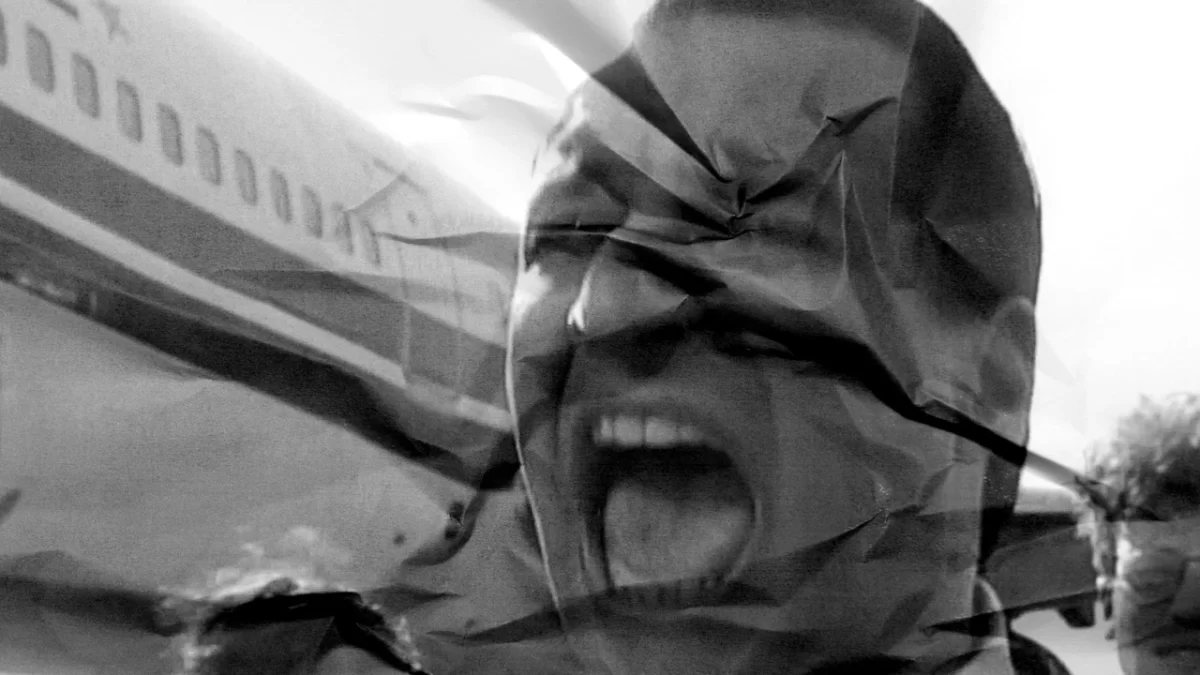
To lose this is to willfully sacrifice whatever soulfulness is contained in The Langoliers. But to end the story here also involves shedding a central metaphor in The Langoliers, that of pressure. Pressure is as much of a thematic agent in the novella as torn paper; the characters survive thanks to the controlled pressure of an airplane cabin, and Toomy is undone and destroyed, combusting with the release of lifelong pressure. The Timekeepers of Eternity focuses instead on touring the various ways in which paper-collage and frayed, turning pages can be put to use, as windows, as metaphors, as surface, as aesthetic effect. The Langoliers is Stephen King’s statement on the nature of time — it is a fantasy of what happens to today when it becomes yesterday — and The Timekeepers of Eternity is, in its self-conscious, material treatment of the image-in-sequence, a realization of this statement, a great digestion of image as it plummets from present to past.
The Timekeepers of Eternity is available to stream for free on Vimeo
Explore Stephen Broomer’s Art & Trash website for his video essays
Broomer is also the founder of Black Zero, a home video label that specializes in Canadian underground film. Explore their collection of films at blackzero.ca
Find the complete October Horror 2023 series here:
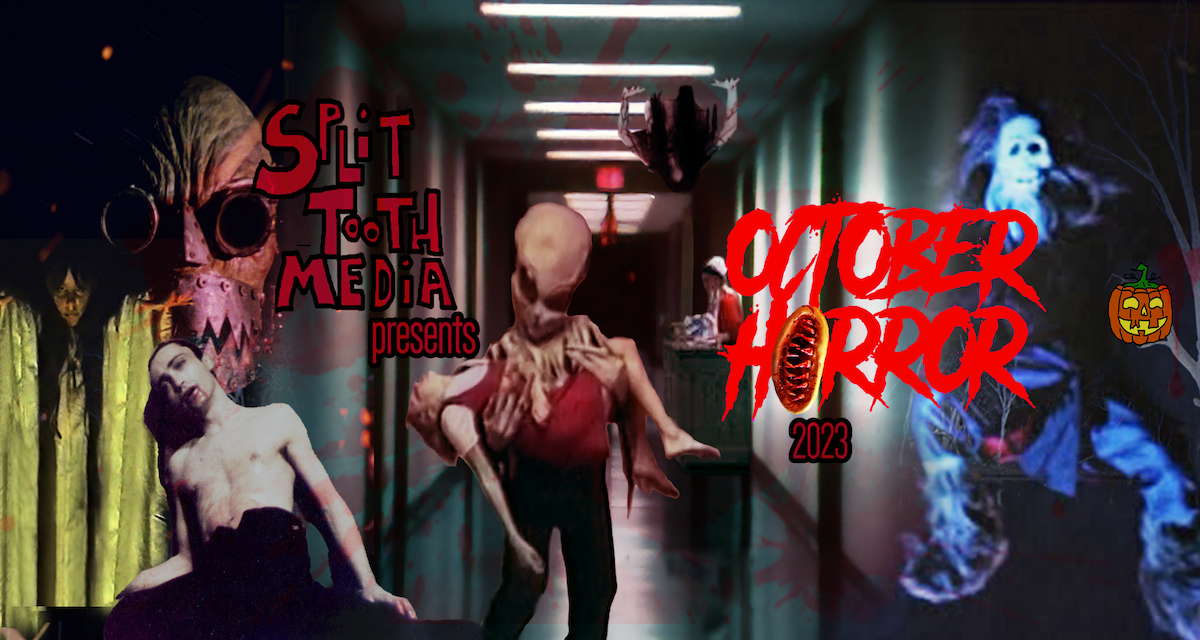
(Split Tooth may earn a commission from purchases made through affiliate links on our site.)

